Review: New World Publication pdf books
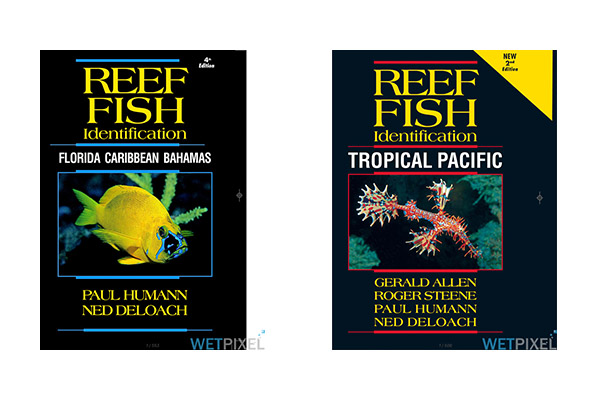
Underwater photography has always been associated with travel. In days gone by, baggage limits and the airline’s somewhat selective adherence to them, meant that it was possible to bring physical copies of reference materials on a trip. Times have, of course, changed and weight limits mean that the carrying of physical texts on trips is no longer viable. Fortunately, digital technology and the devices that we can now use to access books has expanded.

Historically, publishers have tended to offer their publications as apps, rather than as texts. This gave them somewhat more control over distribution, but often sacrificed ease of navigation, particularly in terms of search. Pdf files are widely used in all sorts of roles and provide a standard for navigation and search that many of these apps did not. Gradually, publishers are tending to embrace these features and add their books in a pdf format.
New World Publications, publishers of the ubiquitous reference books on marine life have recently released eight of their marine ID books as pdfs.
- Reef Fish Identification - Florida Caribbean Bahamas 4th Ed. (Paul Humann and Ned DeLoach)
- Reef Creature Identification - Florida Caribbean Bahamas 3rd Ed. (Paul Humann, Ned DeLoach and Les Wilk)
- Reef Coral Identification - Florida Caribbean Bahamas 3rd Ed. (Paul Humann and Ned DeLoach)
- Reef Creature Identification Tropical Pacific 1st Ed. (Paul Humann and Ned DeLoach)
- Reef Fish Identification Tropical Pacific 2nd Ed. (Gerald Allen, Roger Steene, Paul Humann and Ned DeLoach)
- Reef Fish Identification - Galapagos - 2nd Ed. (Paul Humann and Ned DeLoach)
- Reef Fish Identification - Baja to Panama (Paul Humann and Ned DeLoach)
- Coastal Fish Identification - California to Alaska - 2nd Edition (Paul Humann and Ned DeLoach)
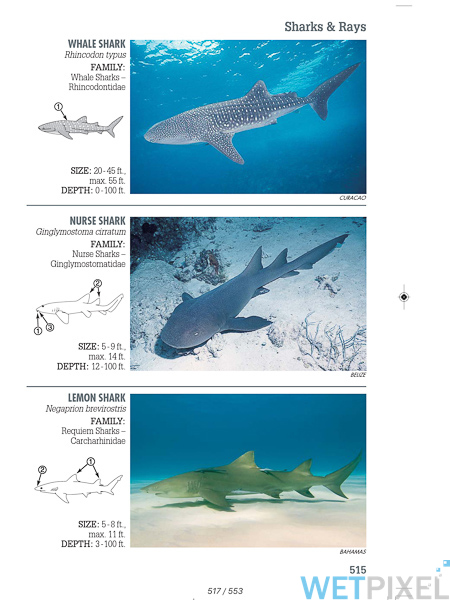
Purchase and Installation
The new pdf books are available to purchase from the New World Publications website. They can be selected as a product, added to a “shopping cart” and then purchased using a credit card or with PayPal. New World manually process all transactions and state that: “Orders received after 11am EST will be sent out the next day”, and please bear in mind that during holidays or weekends, access to the downloaded books is not instantaneous.
New World are rightly keen to protect their intellectual property and so have elected to use Adobe Digital Editions as a platform to launch their pdf books rather than the ubiquitous Adobe Acrobat (or Acrobat Reader). This provides Rights Managed (DRM) access to the books. Note that they will not launch with Acrobat or other pdf readers and users will have to have an Adobe ID and Adobe Digital Editions installed in order prior to purchase in order to use them. Both registration with Adobe and the Adobe Digital Editions app are free of charge.
The Adobe DRM can also be used on many ereaders, although Kindle is not currently among them
Once the purchase is processed, New World will send an email with an attached download link. This simply loads a permissions file (.acsm) onto the user’s computer or internet equipped tablet. If the Adobe Digital Editions app is then launched and the option to “add to library” (File-Add to Library (Ctrl./Cmd. + O)), selected, the user can navigate to the downloaded permissions file. This then allows the device to download the ebook.
I found installation onto my iPad seamless, but had some issues with loading it onto my (Mac) desktop and laptop computers. An email to New World provided a link to Adobe support which suggested that I uninstall and the reinstall the Digital Editions app. I followed the directions, and the books then loaded onto both machines seamlessly.
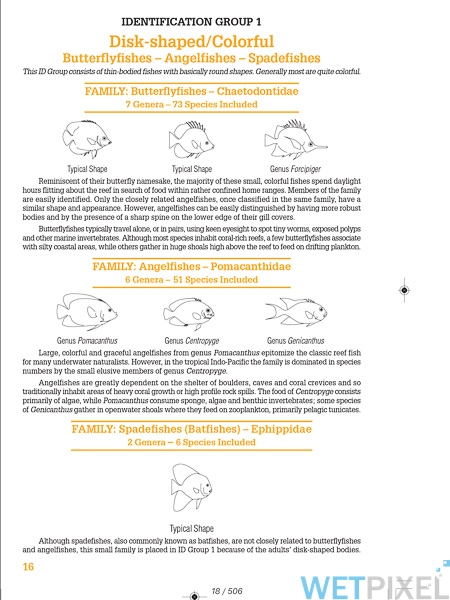
Use
I use these books extensively to identify marine creatures both in the field and at home. As an image library grows, so the need to search for specific images increases. The use of keywords greatly improves the ease with which large image libraries can be searched, and this will normally mean that creatures need to be identified!
The New World books have always offered great tools to make identifying critters and fish relatively simple to do. The use of taxonomic keys simplifies the task of finding which families they belong to, followed by photographs of individual species is an excellent time-proven technique. Prior to the ebook version’s release, books were often open on the desk beside the keyboard during keywording sessions.
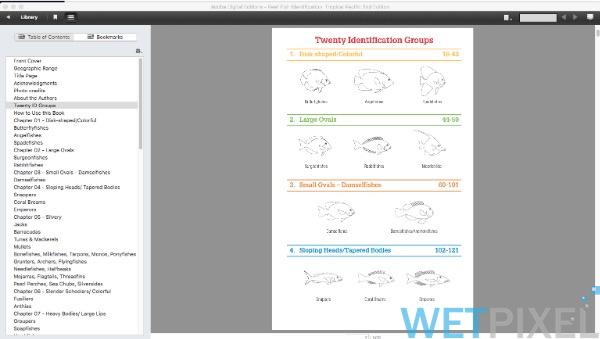
The digital versions of these books continue to offer the keys and ease of identification that the paper versions provide.
The iPad/tablet version of these ebooks looks simply amazing on high resolution devices. The images are really clear and sharp. The screen layout is simple and efficient, with a simple swipe action to turn pages. The screen real estate and size (on an iPad Air 2) means that the pages fill the entire screen. Navigation is via a menu bar that is selectable at the top of the page. This allows the selection of contents, cover, bookmarks and highlight pages.
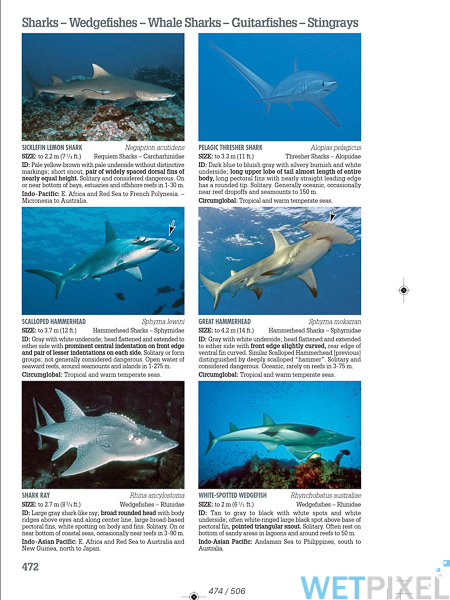
On the desktop, the user can select to display a sidebar with the book’s content if required. Page navigation is by using the keyboard’s arrow keys or touchpad/mousepad as appropriate. The books can be viewed in “Fit Page”, “Fit Width”, “Actual Size” and a variety of zoom options. Adobe Digital Editions can be viewed at full screen.
In all cases, the great advantage of digital formats is that you can use the search function to speed up queries. If you have a fair idea of the fish’s family, but simply want to identify the species, you can enter the family name to shortcut the process. Similarly, if you perhaps know a common name and are seeking a taxonomic one, the search function can provide great assistance.
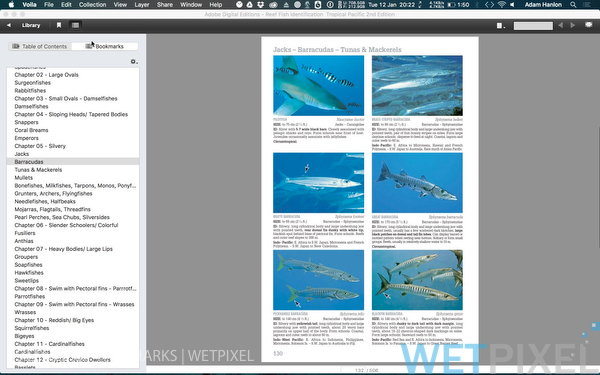
The combination of the familiar format and clear imagery with the ease of navigation incorporated into a pdf make these books a very good choice and the appropriate version should be a part of all traveling underwater image makers gear.

Reef Fish Identification Tropical Pacific (Second Edition)
At DEMA in 2015, Eric Riesch provided me with a paper copy of the second edition of Reef Fish Identification-Tropical Pacific. The book features more than 200 additional species, hundreds of improved photos, scientific name changes and range extensions. It now contains information about 2,000 species with 2,500 photographs of fish species found from Thailand to Tahiti. The first edition was my “go to” reference book for fish in the area, and I am pleased to report that the second edition builds substantially on this preference.
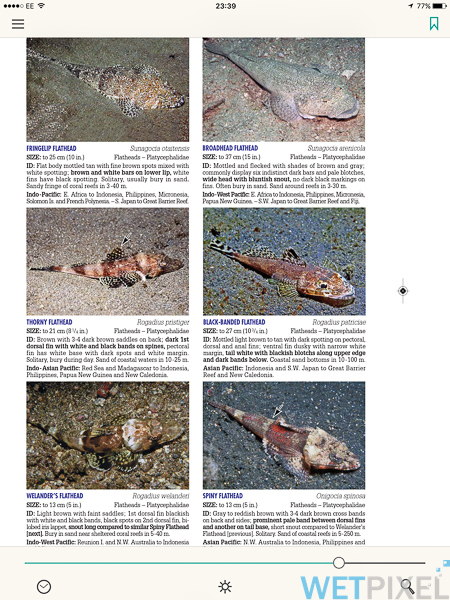
It carries on the familiar combination of taxonomic keys and color coding that simplify navigation and ease of use. The book is co-authored by Gerald Allen, Roger Steene, Paul Humann and Ned DeLoach, who together probably represent the single greatest pool of knowledge about fish species on the planet!
On its release, I purchased the pdf version of the second edition too, and that forms part of the basis of my review of the digital versions above. The second edition is undoubtedly worth purchasing, even for those that own the first edition. The additional species listed and the new photographs simply make the book more definitive and easier to use.
Conclusion
If you are planning to travel to areas that these guides cover, they should be a standard part of your equipment! If you won the paper versions, my suggestion would be to purchase updated edition as pdfs and enjoy the additional portability and utility that these provide when loaded onto a computer or tablet.
The pdf versions of the guides are available direct from New World Publications priced at $35.00 each. The paper version of Reef Fish Identification - Tropical Pacific (2nd Edition) is also available direct from New World, via other online retailers or perhaps best, via your local underwater imaging retailer. It is priced at $48.00.
FTC notice.
New World Publication provide the reviewer with a paper copy of Reef Fish Identification - Tropical Pacific and a pdf version of Reef Fish Identification - Florida, Caribbean and Bahamas free of charge for use in the review. The reviewer purchased a pdf version of Reef Fish Identification - Tropical Pacific for use in the review.